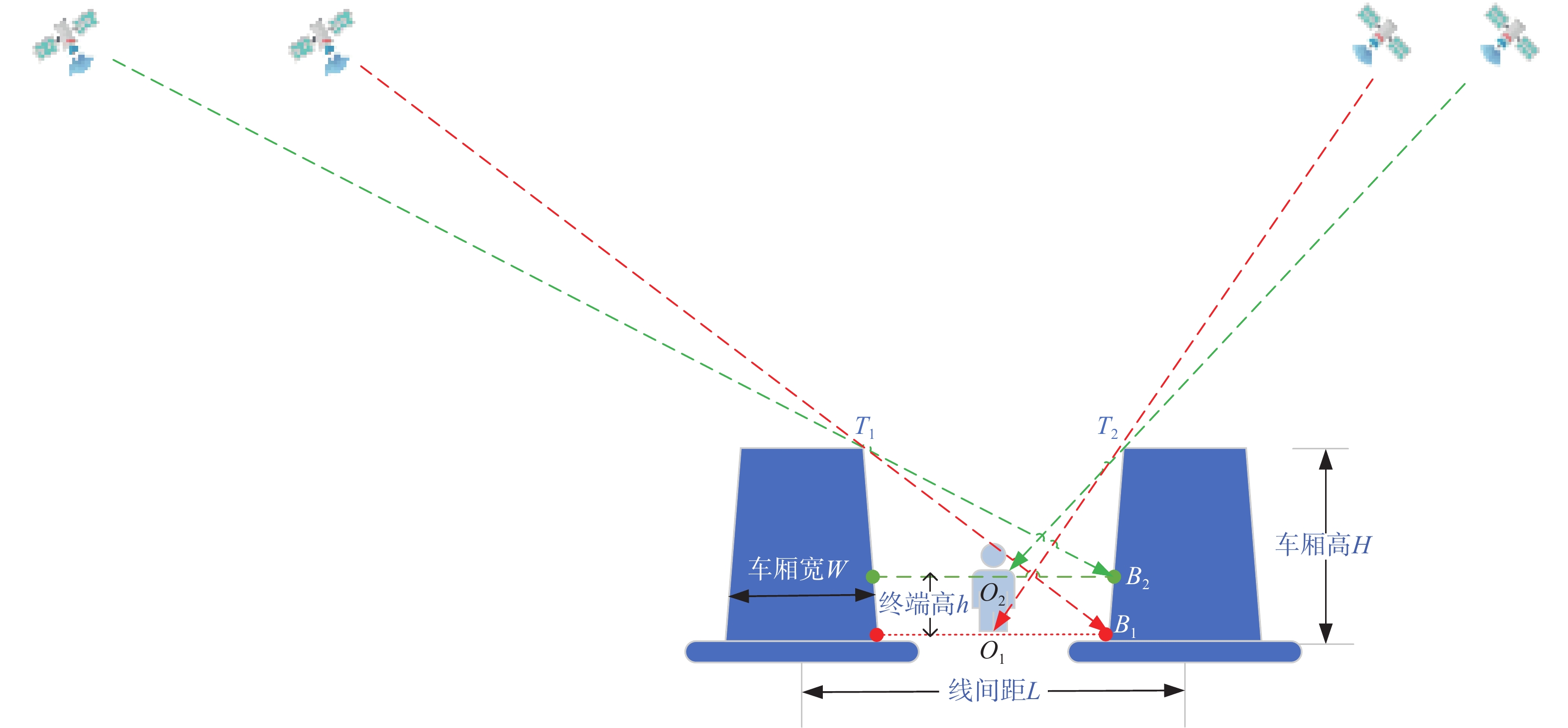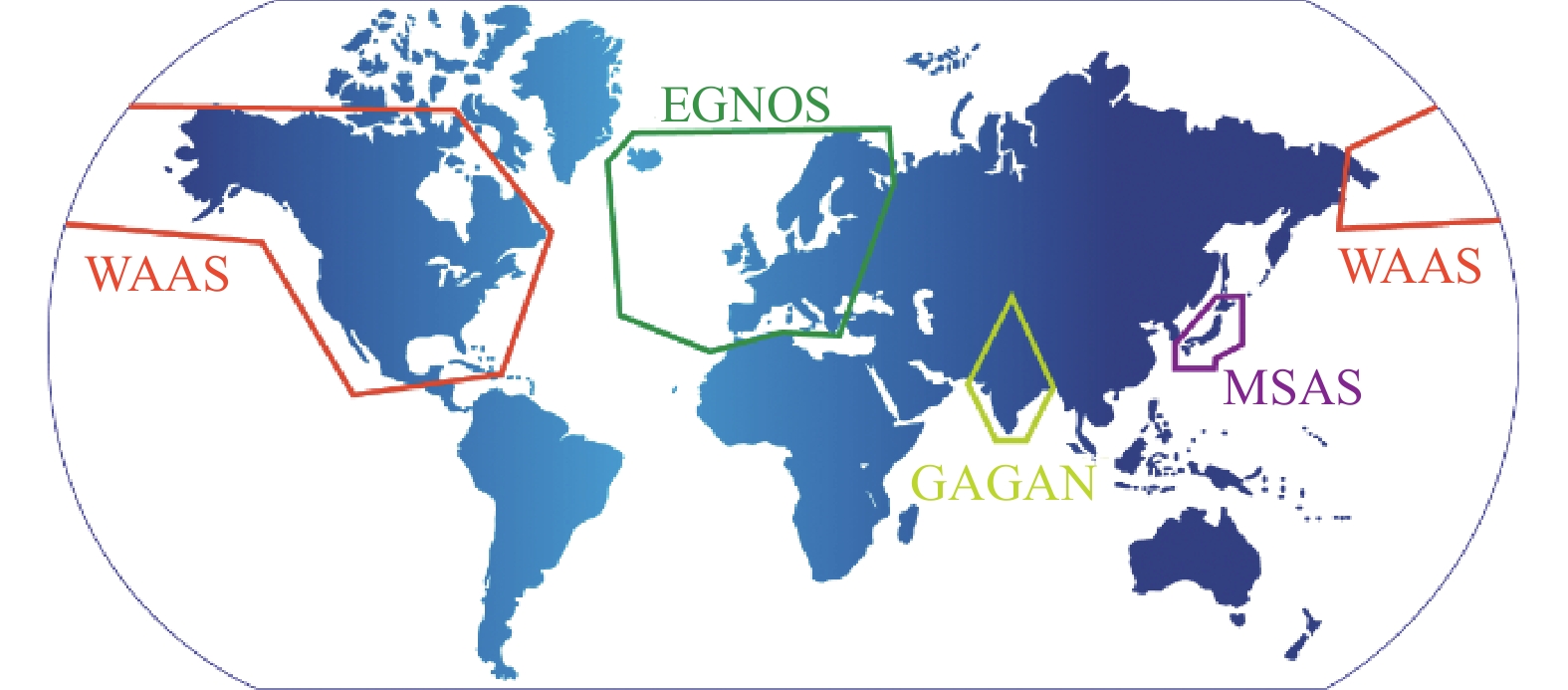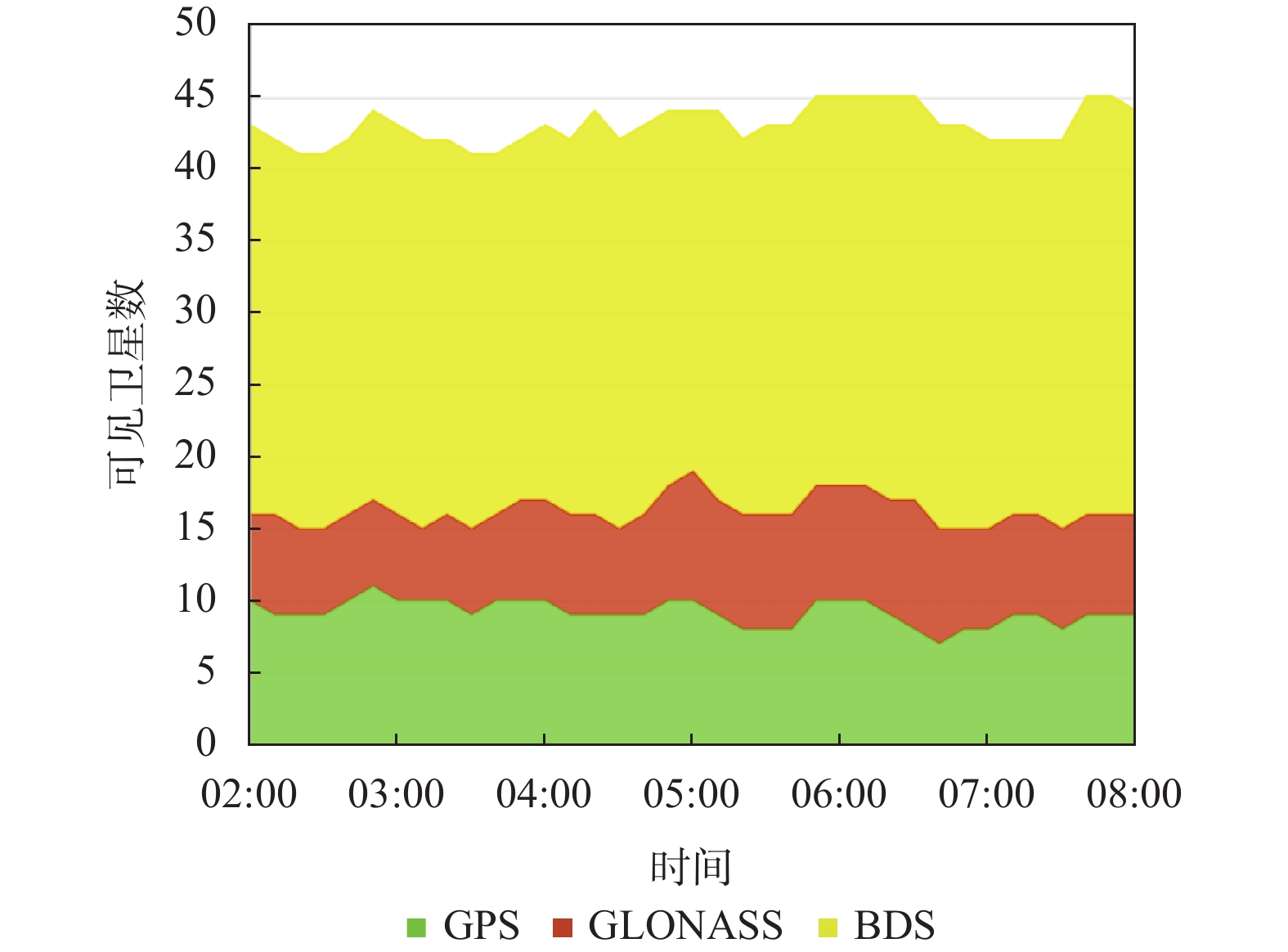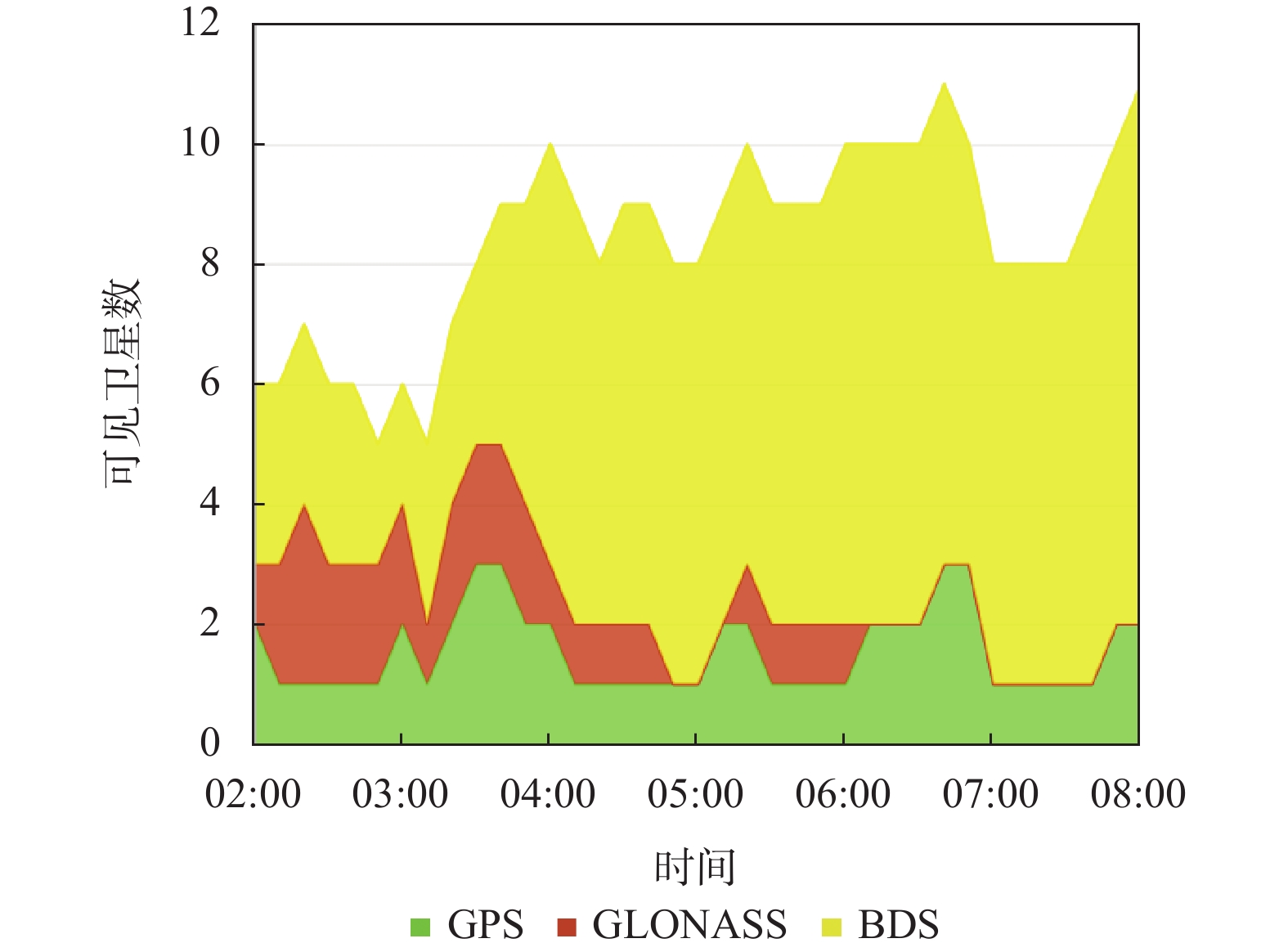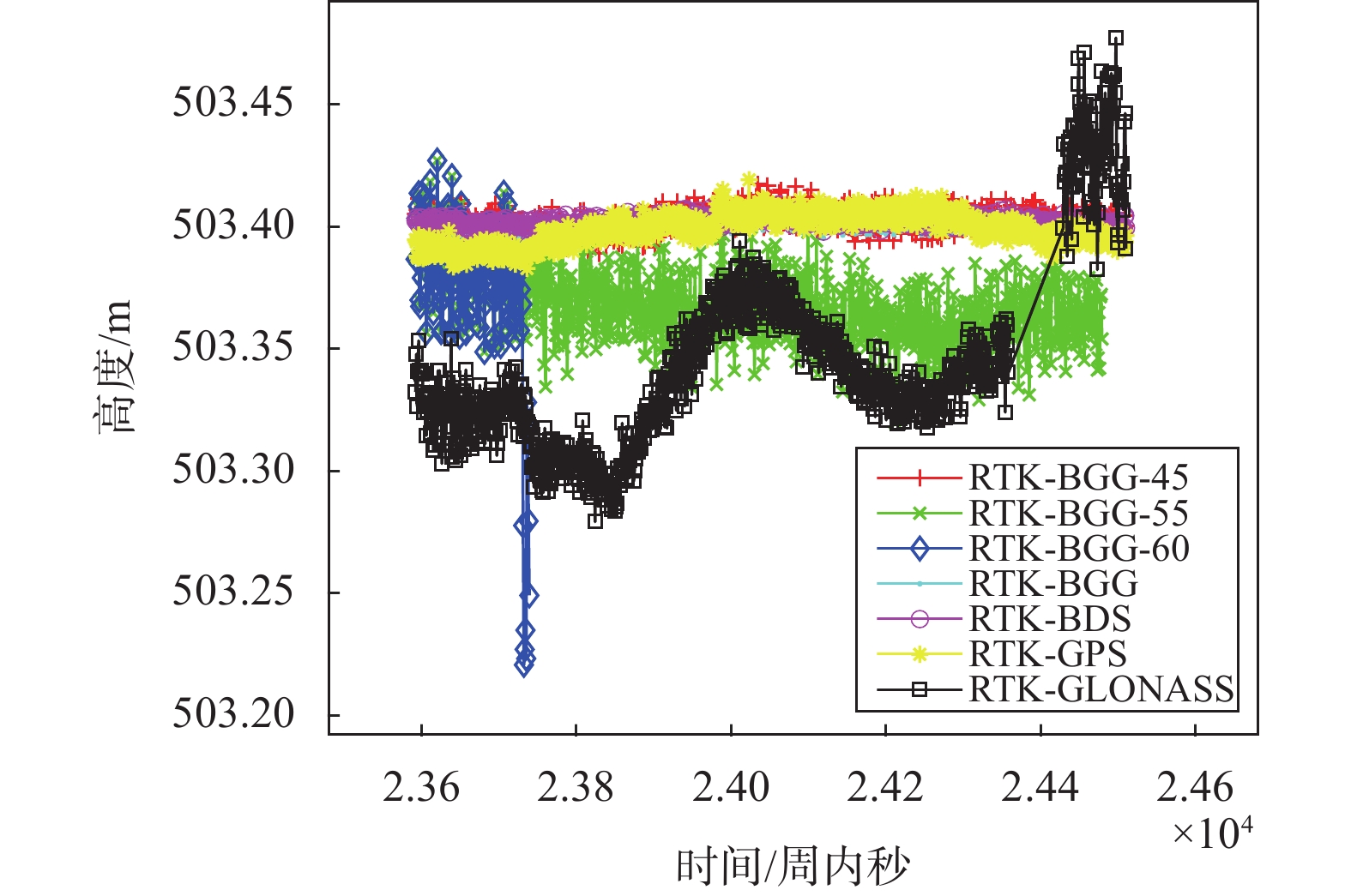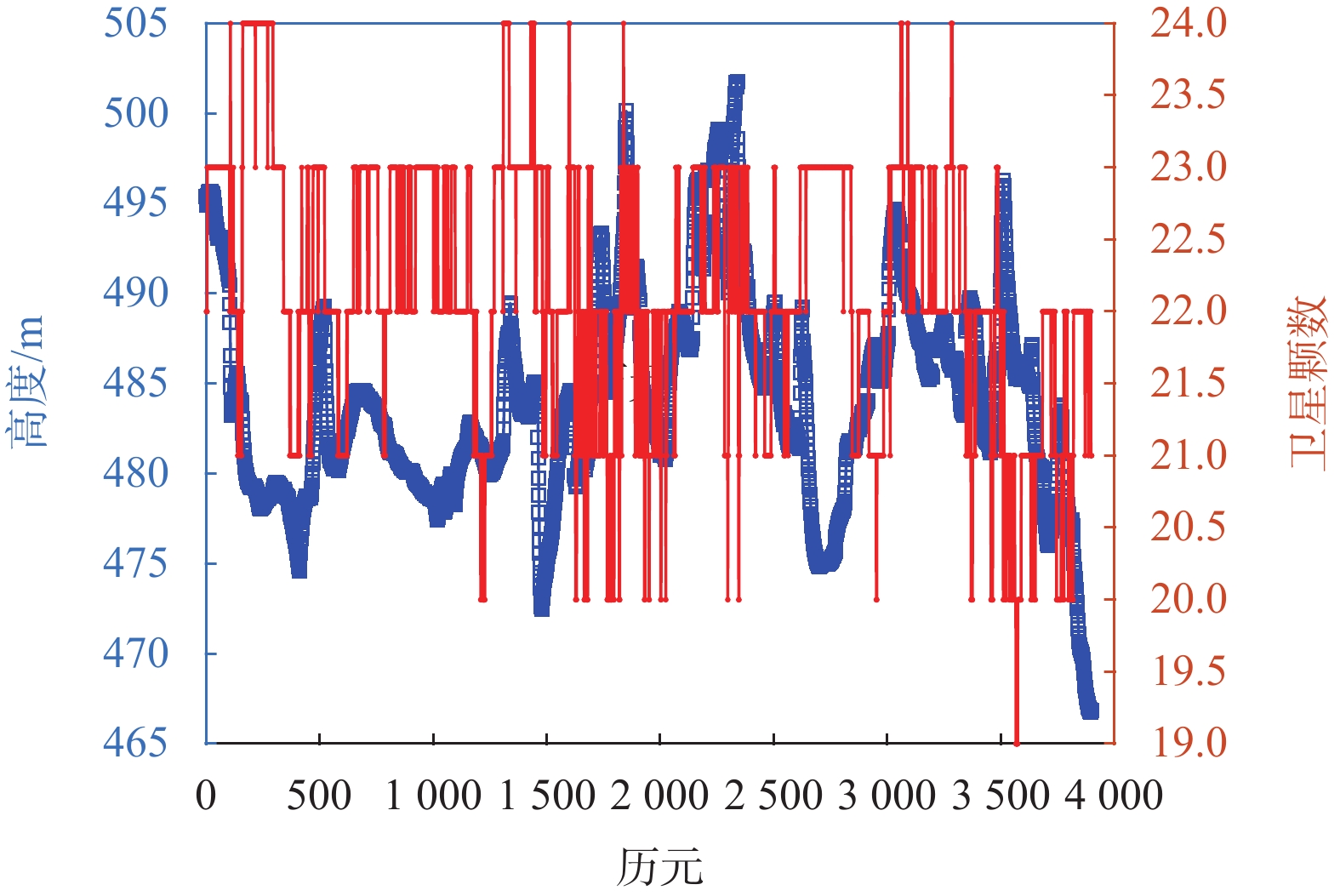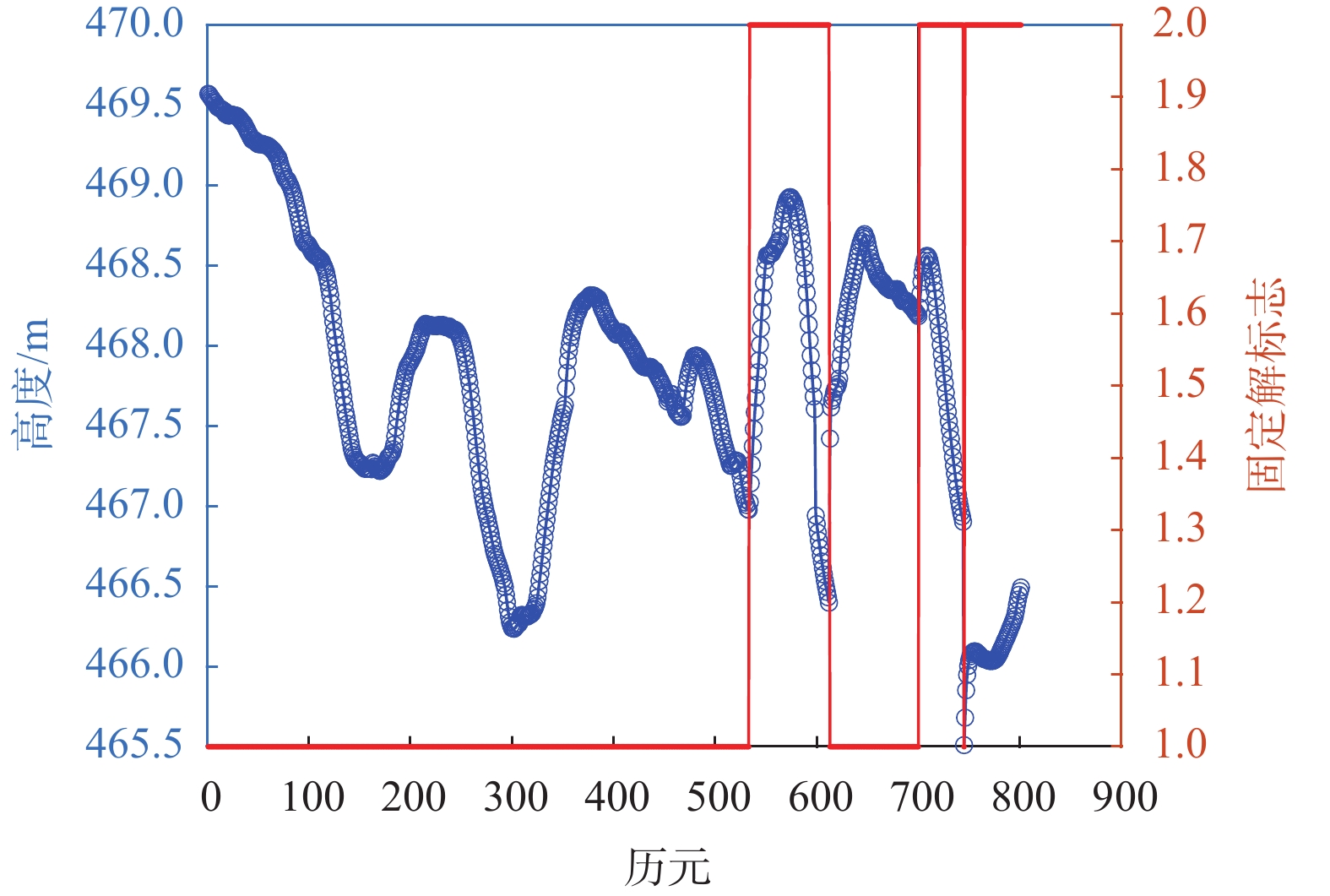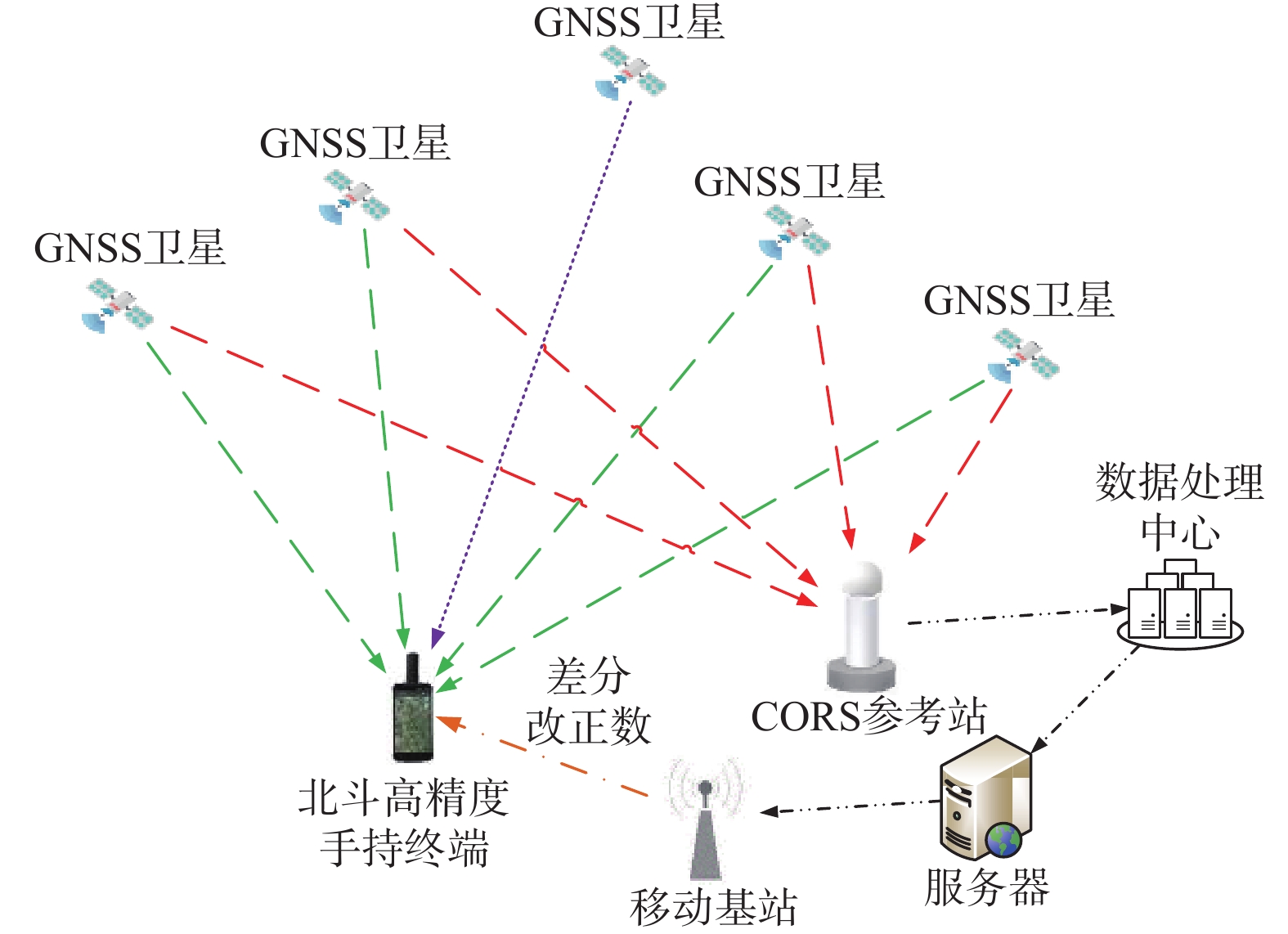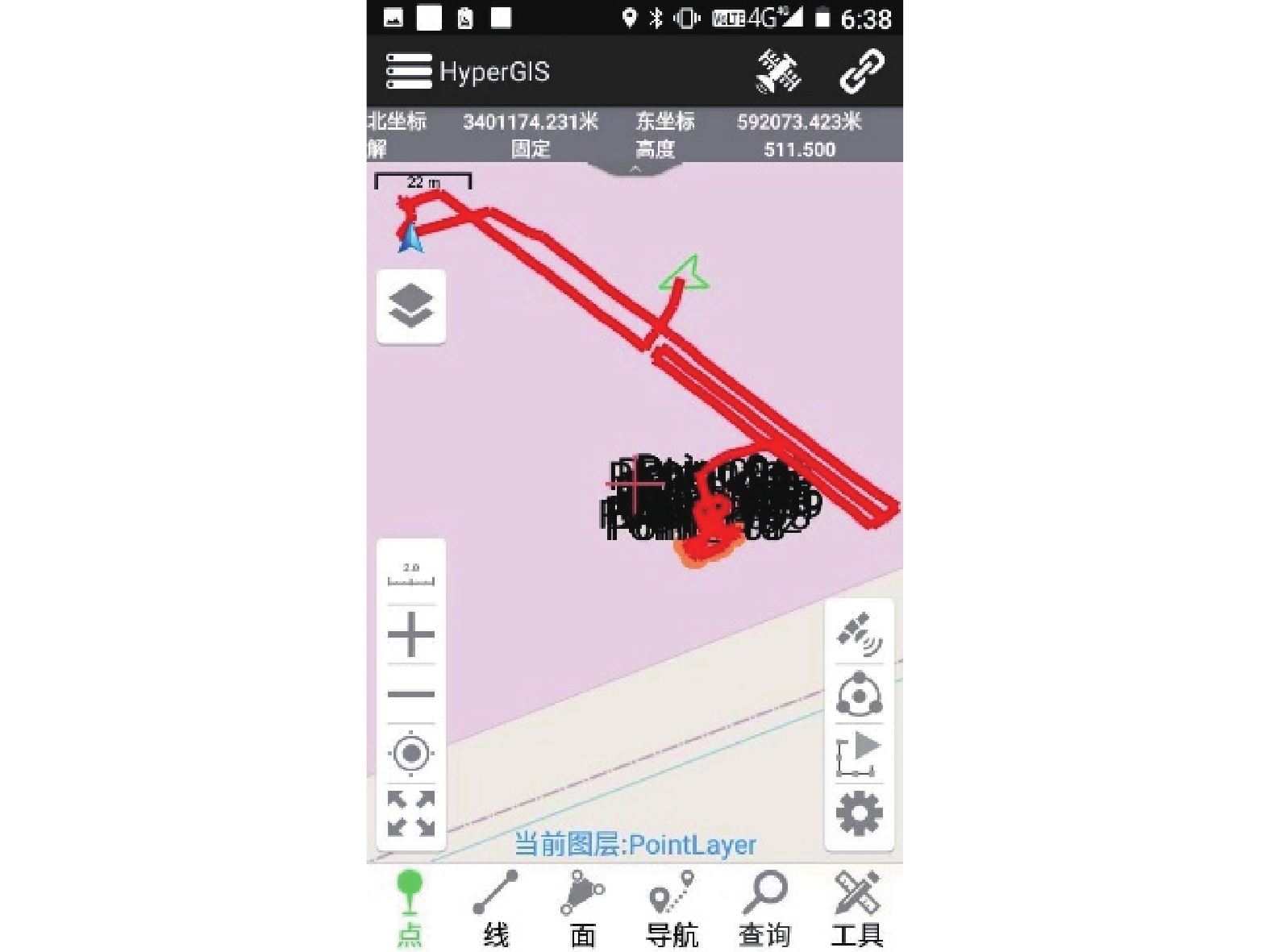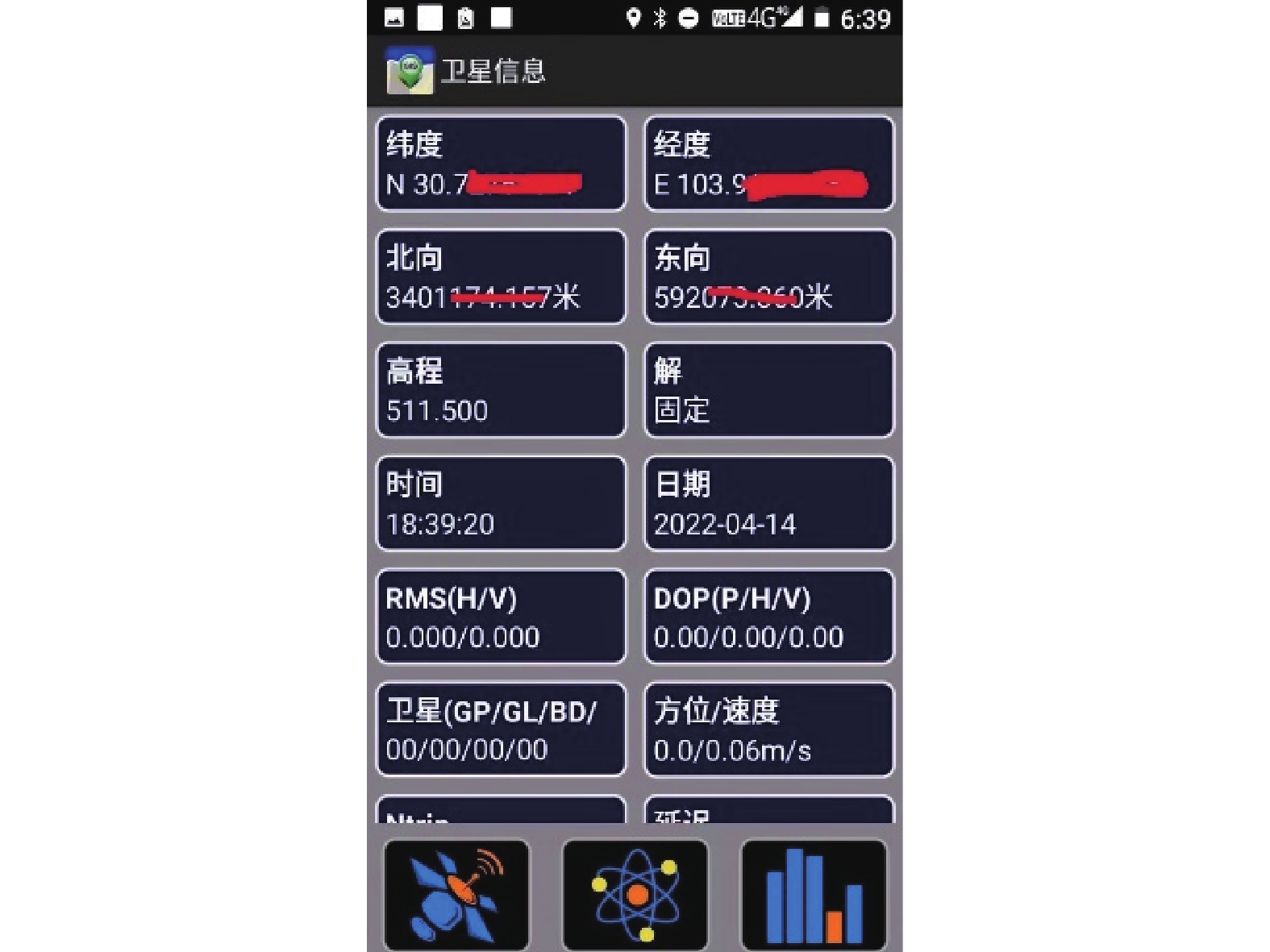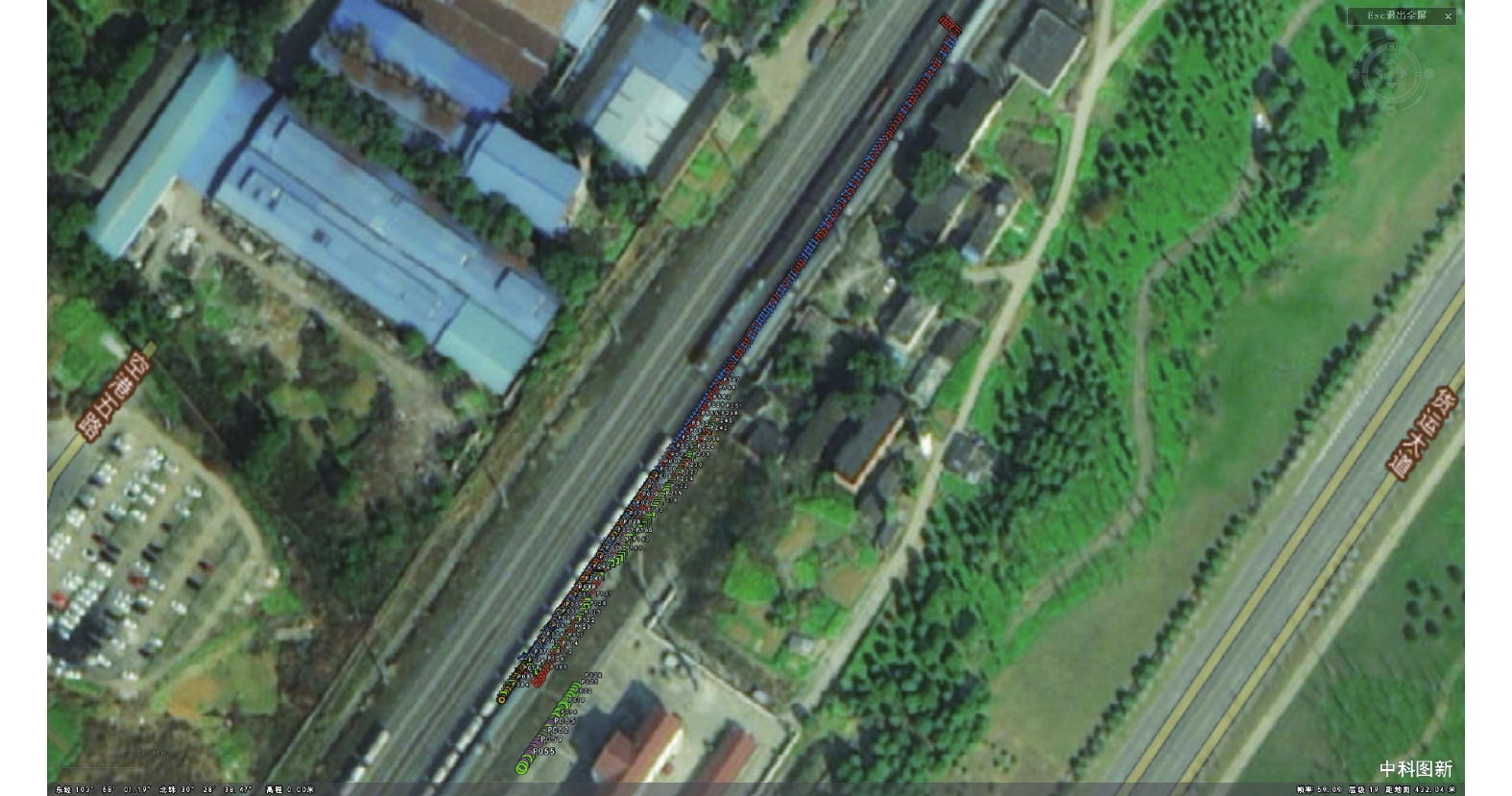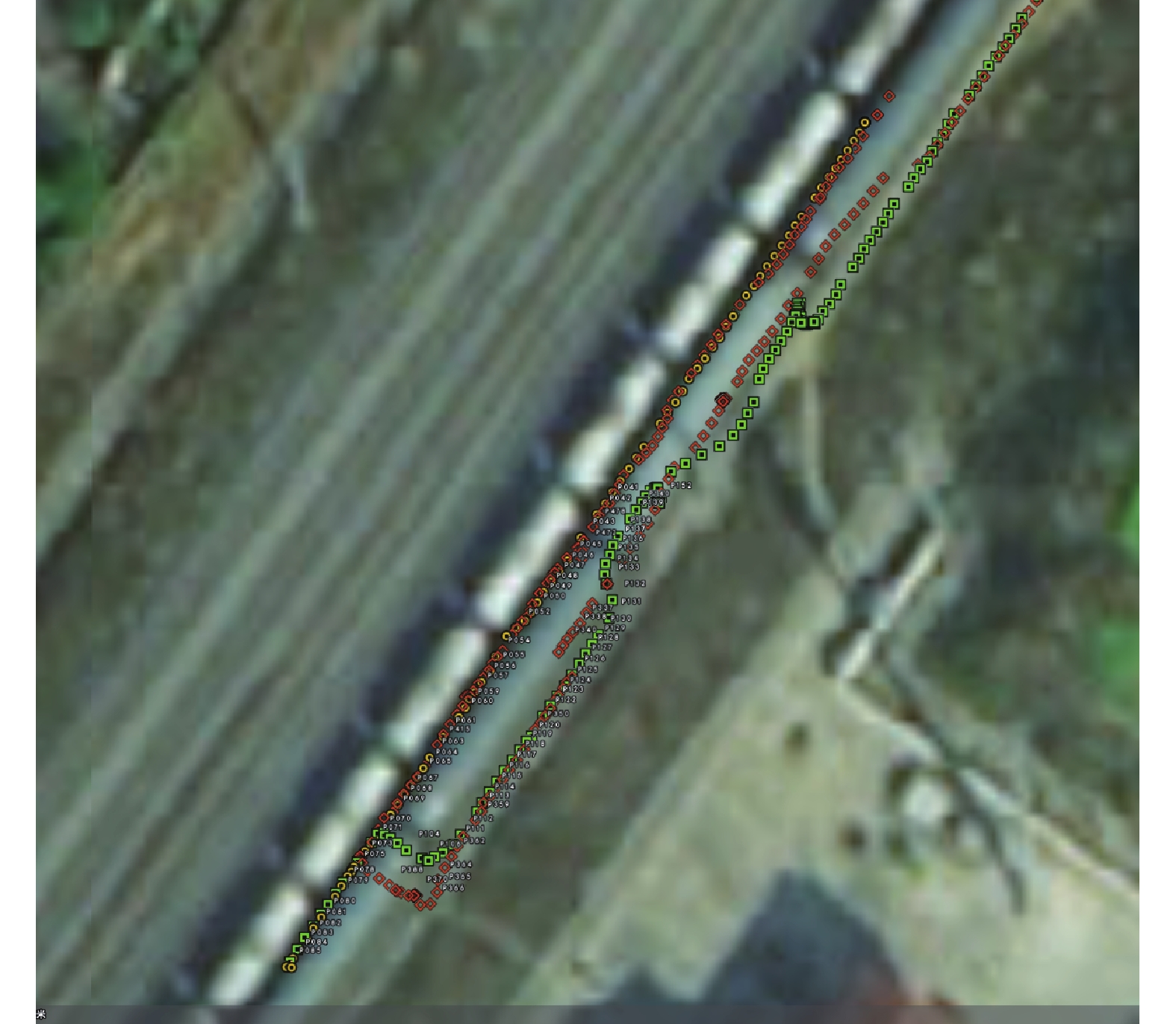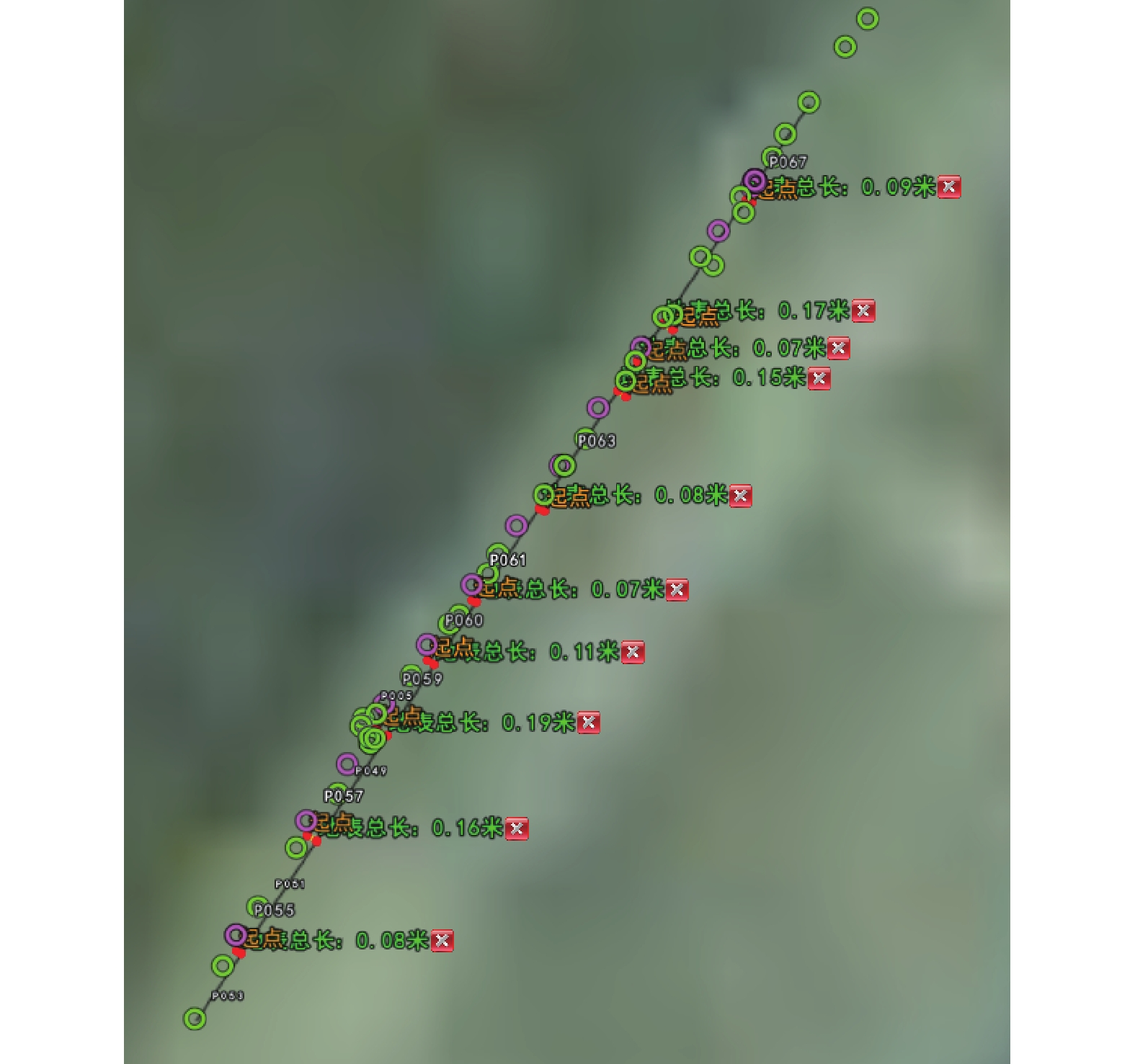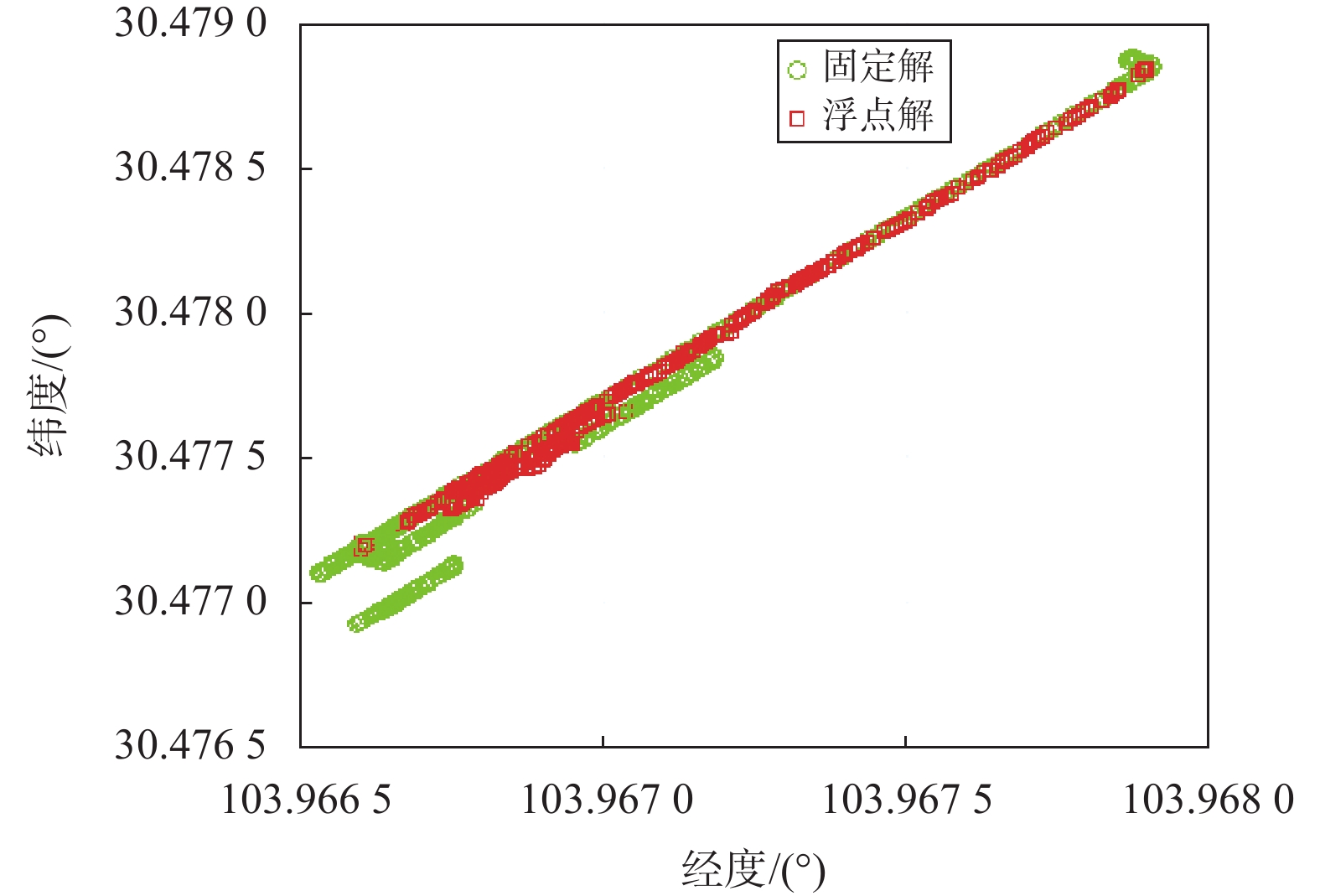Application of railway inspection technology based on BeiDou high-precision positioning
-
摘要: 铁路巡检工作是铁路安全运营工作的重中之重,但是铁路站场内复杂的环境使得常规的卫星导航定位性能大大降低,无法满足巡检工作和数据运营的要求. 本文分析了铁路股道形成的轨道峡谷模式下定位场景的特点,分别对使用北斗导航定位实时动态(real-time kinematic, RTK)、连续运行参考站(continuously operating reference stations, CORS)、星基增强系统(satellite-based augmentation system, SBAS)等高精度增强模式进行了分析、实测及精度统计,最后使用了集成多种定位模式的手持北斗高精度定位终端,接入千寻CORS数据,在成都公兴站股道上进行了实地使用与巡检模拟测试. 分析结果表明:定位精度有较大提高,高精度定位结果可以满足铁路巡检要求,为下一步开发智能巡检管理系统提供了有益的参考.
-
关键词:
- 铁路巡检 /
- 轨道峡谷 /
- 北斗高精度定位 /
- 实时载波差分 /
- 连续运行参考站(CORS)
Abstract: Railway inspection work is the most important for the safe operation of railways. However, the complex environment within railway stations significantly reduces the performance of conventional satellite navigation systems, making it unable to meet the requirements of inspection. This article analyzes the characteristics of positioning scenarios made by railway track canyon mode, examines and statistically analyzes high-precision enhancement modes such as BeiDou RTK, CORS, and SBAS. Finally, a handheld BeiDou high-precision positioning terminal that integrates multiple positioning modes is used in conjunction with Qianxun CORS data for testing on tracks at Chengdu Gongxing Station. The analysis results show a significant improvement in positioning accuracy, indicating that high-precision positioning results can meet the requirements of railway inspections and provide valuable references for developing intelligent inspection management systems in the future. -
0. 引 言
铁路是我国重要的交通运输方式之一,关系着国民经济的大动脉,安全巡检、危情处理和日常养护是铁路运营管理工作的重中之重[1-3].
铁路运输的货场或调度场面积涉及数十平方公里,由几十条接驳路轨形成长条形调控场地,轨道间距离一般比较接近,当多列各类型车厢并排一起时,对一般采用无线场强的定位技术,会形成自然屏障,所以无法精确定位,若增加无线定位标签数量,则成本和效益均不理想;近些年来较为常用则是卫星定位技术,虽然卫星信号是从天空直接传达至接收机,但受车厢并排所引起的屏蔽和遮挡影响,以及常规大气层及各种物理、定位算法及硬件设计技术等方面的限制,仍然有数米的定位误差[4-8].
基于此种背景,一套“铁路轨道峡谷”模式下的高精度定位系统对于铁路行业定位非常重要,并且应具有高灵活性、高可靠性和扩展性,可强化室外班组巡检作业人员的信息化、标准化管理和安全作业信息的管理,为铁路建设和检修维护提供重要安全保障,降低运维成本,系统提高安全水平、生产效率和管理水平.
1. 铁路巡检技术需求分析
相对于公路和航空而言,铁路运输在中国的交通运输行业中始终占有至为重要的地位,而铁路巡检工作事关铁路运输的安全. 为了保障铁路安全运行,以前老旧的人工巡检工作模式已经不能适应现代社会的需要,完善并加强信息化和物联网手段对工区巡道工的管理、沿途设施的维护以及保障工人人身安全等具有非常实际的意义.
1.1 铁路巡检系统分类
现有的巡检系统基本上分为三类:第一类是基于信息纽扣的电子巡检系统,通过手持带有信息标志的巡检终端,巡检人员通过触碰方式读取信息,然后巡检仪记录将收到的结果送往管理中心控制的巡检主机,供后续的考查统计等;第二类是基于射频识别技术(radio frequency identification, RFID)的电子巡检系统,RFID系统利用读卡器与射频卡,通过电磁耦合或者电感耦合实现双方的能量传输和信息交换;克服了信息钮扣系统必须接触的缺陷,但RFID巡检点呈现离散分布,无法体现和记录巡检路径,铁路设备是否按照操作规程进行检查亦无法从结果中获知;第三类是基于GPS和地理信息服务引擎(geographic information system, GIS)技术的电子巡检系统,巡检终端可实时接收GPS数据,待定位成功后保存终端定位位置,巡检完成后所有存储的导航数据可导入主机,结合GIS应用软件进行分析,最终自动生成巡检报告[9]. 该方法存在受遮挡无法定位、因定位精度较低导致不能分辨设备集中时的数据等缺陷.
上述三种方法中,信息纽扣电子巡检系统受技术限制,必须外露,易遭受破坏且要求巡检仪与纽扣必须精确接触. RFID电子巡检系统无法记录巡检路径,仅能将巡检点以离散形态呈现,无法确认巡检质量和效果. GIS/GPS电子巡检系统存在因定位精度较低,无法分辨设备集中时的数据和受遮挡无法定位等缺陷. 为了避免了上述问题,本文研究在保证高精度导航定位的基础上,集成丰富的传感系统,实现多方位的巡检管理和保障.
1.2 铁路峡谷模式下的卫星可见性分析
相邻两条轨道中心线的间隔距离一般称为线间距,铁道部《铁路技术管理规程》有详细规定,它是限制列车运行速度的原因之一. 图1中给出了部分铁路线间距规定.
经查询高速铁路标准资料[10]和普速铁路标准资料[11],确定了如下参数:
1)线间距:普速铁路为4.2 m,高速铁路为5.0 m.
2)车厢尺寸:一节高铁车厢的列车车体宽度为3.36 m,高度为4.05 m;普通列车的宽度约为3.3 m,高度约为2.8 m.
3)终端高度:不小于1.2 m (定位终端位于手持状态或肩膀上).
据此建立铁路轨道峡谷模式下的卫星可视范围模型,如图2所示.
当人员行走于股道中间时我们称之为“高仰角模式”,行走于列车旁进行巡检作业时称之为“半边天模式”. 由图2可知,当手持北斗终端位于手上或贴近轮轨进行检测时,产生一个卫星入射角的变化,对于导航定位解算时高度截止角参数的设置有一定的影响,它决定了当前卫星可见性的分布,进而产生变化的精度衰减因子(dilution of precision, DOP)值影响了最终的定位精度.
$$ \angle {T}_{2}{O}_{2}{B}_{2}=\mathrm{arctan}\frac{2\left(H-h\right)}{\left(L-W\right)} $$ (1) $$ \angle {T}_{2}{O}_{1}{B}_{1}=\mathrm{arctan}\frac{2H}{\left(L-W\right)} $$ (2) $$ \angle {T}_{1}{{B}_{2}O}_{2}=\mathrm{arctan}\frac{\left(H-h\right)}{\left(L-W\right)} $$ (3) $$ \angle {T}_{1}{{B}_{1}O}_{1}=\mathrm{arctan}\frac{H}{\left(L-W\right)} $$ (4) 以当前的高速铁路参数,可以计算得出巡检高仰角的极值范围. 高铁车厢的高度较普速列车有所增加,为乘客提供了更宽阔的空间,但是从基于安全风险角度出发,线间距亦有所拓宽,仰角计算结果与普速列车相比略有变化. 从表1可以看出,如此之大的高度截止角也确实给导航解算带来了相当大的挑战.
表 1 仰角计算结果类型 高仰角模式 半边天模式 $ \angle {T}_{2}{O}_{2}{B}_{2} $ $ \angle {T}_{2}{O}_{1}{B}_{1} $ $ \angle {T}_{1}{{B}_{2}O}_{2} $ $ \angle {T}_{1}{{B}_{1}O}_{1} $ 高铁 73.948° 78.554° 60.082° 67.955° 普速 74.291° 80.870° 60.642° 72.181° 2. 高精度导航定位与增强技术
通过对铁路定位需求的分析可以看出,卫星在铁路轨道峡谷内的信号受到严重的遮挡或反射,跟踪数量和测量精度急剧下降,给导航定位带来了挑战[8,12]. 在这种场景下必须采取有效的措施来提高卫星跟踪数量和定位精度.
北斗三号(BeiDou-3 Navigation Satellite System, BDS-3)已经于2020年7月完成建设,与美国的GPS、俄罗斯的GLONASS、欧洲的Galileo一同形成当今运行的GNSS. 各导航系统间频点相同或接近,轨道设计原理相同. 随着信号现代化的不断发展,目前已经基本实现了新体制信号的兼容互操作,为我们实现多星多频组合导航定位带来了便利. 同时,也极大地提高了城市街区或峡谷等遮挡/多径影响下具有挑战性的定位场景的导航定位精度和完好性[13].
2.1 误差源分析与导航增强技术
GNSS定位的核心是高度精确的同步时钟,导航接收机接收并解调来自特定卫星的信号并计算其与该卫星的距离,当接收机测得与至少4颗卫星的距离时,就可以解算其本身的位置. 然而,位置精度的准确性受到星载原子钟漂移、轨道预报误差、电离层误差、对流层误差、多径与反射延迟等多种误差源的影响. 为了提高定位精度和性能,需要利用算法模型或差分增强手段来降低误差源的影响,主要的校正方法有实时动态(real-time kinematic, RTK)、连续运行参考站(continuously operating reference stations, CORS)、星基增强系统(satellite-based augmentation system, SBAS)等.
RTK指的是实时动态测量技术,它是以高精度测量的载波相位观测为依据的实时差分技术,能够得到厘米级的定位精度,极大地提高了测量精度和作业效率. 简单来说,设置在附近(一般不超过20 km)的基准站计算获得校正数据,通过电台或移动网络将这些校正数据传递给需要测量的接收机(称之为移动站),可以消除卫星星历误差、卫星钟差、大气传播等大部分的GNSS误差,从而获得更为精准的位置信息.
由于RTK技术每次测量时都需要建设基准站,且基准站作用有效距离较短,须自行建立差分数据链,在使用时很不方便,随之产生了网络差分定位服务系统即CORS,它是利用网络RTK技术建立的连续运行参考站,是卫星导航、网络通信、数据链等技术融合的新技术成果. CORS的出现极大提高了高精度定位和测量测绘的速度与效率,使得外业人员的测绘工作强度大大降低,并减少了测绘工程的作业费用. CORS技术带来了两个改变:一是可以随时随地使用单机进行高精度的测量,得到厘米级的动态位置信息,极大加快了基础地理信息的建设;二是对于重要的桥梁、大坝及山坡等位置可以开展高精度定位和形变监测,对位移变化进行长期的毫米级监测,可对过度变形、位移或滑坡进行实时预警和长期趋势预测.
提高位置精度的手段主要有两类,即差分与增强. 上述的RTK、CORS即属于差分技术,另外一类为增强技术,主要有机载增强系统(airborne based augmentation system, ABAS)、地基增强系统(ground-based augmentation systems, GBAS)、SBAS等,本文主要使用的是SBAS技术.
SBAS是为了实现原有卫星导航系统定位精度的改进而诞生的一个导航增强系统,主要由地面监测站、主控站、注入站和静止地球轨道(geostationary earth orbit, GEO)卫星四部分组成. 如图3所示,SBAS的监测站广泛分布于世界各地,对所有导航卫星进行长期实时的监测并将监测数据向主控站实时传送,主控站收到各监测站传送的伪距、载波等原始观测量数据后进行误差修正信息建模计算(星历误差、卫星钟差、电离层延迟等),GEO卫星收到注入站上注的修正结果数据后再播发给广大的导航用户,从而实现导航性能和定位精度的改进.
目前较为完善的SBAS有美国的WAAS(Wide Area Augmentation System)、欧洲地球同步卫星导航增强系统(European Geostationary Navigation Overlay Service, EGNOS)、俄罗斯的差分校正和监测系统(System for Differential Corrections and Monitoring, SDCM) 、日本的 (Multi-Functional Satellite Augmentation System, MSAS)和印度的GPS辅助GEO增强导航系统(GPS Aided Geo Augmented Navigation,GAGAN),中国的北斗星基增强系统(BeiDou satellite-based augmentation system, BDSBAS)也发布了接口控制文档,初步完成建设并投入试运行.
2.2 实时载波差分定位
本次试验在成都办公楼顶架设了2台高精度差分接收机,设置模式为同时接收GPS、GLONASS、BDS三系统导航信号,测试时长约为2 h,下面选取其中一段时间的数据来分析系统模式及高度截止角对差分结果带来的影响.
由图4可知,三系统组合之后,卫星数惊人的达到了40颗以上,然而如图5所示,如果我们设置截止角为60°后,模拟恶劣环境下的峡谷模式,则卫星数总共约为10颗,依靠单系统几乎无法定位.
将存储好的两份原始数据转换为RINEX(Receiver Independent Exchange Format)文件,通过后处理算法获取高精度定位结果,为了方便直观理解,我们以高程为例统计差分精度. 数据对比分析的维度有三个:组合模式、导航系统及高度截止角. 在统计时关注固定解成功率、公共卫星数及差分精度.
RTK差分结果统计如表2所示.
表 2 差分统计结果模式 系统 截止角/
(°)卫星
颗数Fix成功率/
%高程精度/
m多星座 BDS 45 12.2 99.78 0.004 BDS+GPS 55 8.0 96.62 0.015 BDS+GLONASS 60 7.9 16.10 0.034 BDS+GPS+GLONASS 10 28.3 99.89 0.002 单星座 BDS 10 14.0 100.00 0.002 GPS 10 7.4 100.00 0.006 GLONASS 10 6.9 92.38 0.036 通过分析图6中的结果,可得下述基本结论:
1) BDS+GPS+GLONASS三系统组合模式下的定位精度和稳定性要高于单系统模式;
2) 单系统模式中,BDS和GPS精度接近,GLONASS精度较差;
3) BDS+GPS+GLONASS三系统组合模式下,截止角为45°时,仍然有10颗以上足够的卫星参与定位,差分结果与常规模式无明显差异,但如果提升至55°时,卫星颗数下降至勉强定位,基线结果有了一定的偏差;截止角为60°时,公共卫星数已经不能保证,仅部分历元可进行差分,成功率急剧降低;
4) 虽然高仰角时的差分精度似乎还处于厘米级水平,但这仅是因为在此模拟计算中忽略了低于截止角的卫星而并未调整其他卫星的测量精度;在环境恶劣的实际情况下,测量精度会随着遮挡和反射等多径误差明显降低,很难保证厘米级的定位精度.
2.3 星基增强定位
关于星基增强定位的测试方法,实验中将两种不同类型的接收机放置于写字楼门前的空地上,天线接近窗户边上,环境遮挡反射严重. 结果如图7~10所示. 如图8所示,此时两种接收机的灵敏度均较高,可捕获较多的卫星,但是测量精度较差,参与解算的卫星数反复跳变,单点定位精度降低至20~30 m. 而支持SBAS的接收机则能够根据差分信息(差分卫星为GAGAN的132号卫星),获得浮点解(结果标志为2)甚至固定解(结果标志为1)的定位结果,如图10所示.
3. 高精度北斗手持终端实测与分析
3.1 北斗手持终端高精度定位方案
面对“铁路峡谷”定位场景,为了应对遮挡严重、多路径误差大的挑战,我们采用了多功能定位增强北斗手持终端进行了测试,定位模式包括GNSS、CORS和SBAS. 手持终端插入4G卡,通过账号使用NTrip协议接入千寻CORS网络. 测试场景包括空旷场地、树木、楼宇等,最后我们在成都公兴站铁路站场内进行了实地巡检模式下的高精度定位测试. 图11展示了北斗高精度手持终端定位方案的架构.
3.2 测试过程及结果分析
为了全面测试手持终端的性能,我们设计了园区空旷道路、树阴密集和高层楼宇间等多种复杂定位场景,定位过程中接入千寻CORS网络,并通过GIS软件记录差分结果. 图12和图13 分别给出了GIS记录的轨迹和定位结果.
手持终端使用过程的测试数据及表现如表3所示.
表 3 多场景测试结果场景 水平
精度/m高程
精度/m固定
成功率/%表现 空旷 1.27 2.99 100 精度高,表现优秀 树阴 3.80 7.84 95 初始化时间较长,表现良好 楼宇 5.01 3.84 70 初始化时间长,表现较好 3.3 成都铁路某站场实测
如图14~17所示,项目组携带高精度终端,经过预约后至成都公兴站,进行现场测试和数据存储. 通过与站长及巡检人员的交流,了解常规的巡检工作模式,模拟进行如下三类测试:窄股道的定位、宽股道的定位和站台上的空旷定位,此三类定位均进行了往复测试,以确定同样路线时的重复精度.
导出轨迹数据并使用MATLAB作图,分析位置精度与轨迹重复性,如图18~19所示,其中红色为浮点解,绿色为固定解.
经过数据分析与统计,以高程为例,精度统计如表4所示.
表 4 铁路站场高程精度统计项目 总数/个 最大值/m 最小值/m 均值/m 标准差/m 固定解 630 496.3 494.4 495.6673 0.3559 浮点解 393 500.3 495.2 497.0567 0.9963 总数 1023 500.3 494.4 496.2011 0.957 0 成功率/% 61.58 4. 结论与展望
在站场测试过程中与巡检人员进行了交流和确认,目前的巡检定位系统较陈旧,有较强的升级需求和必要性,当前恶劣环境下亚米级的定位精度基本满足要求,产品开发时应继续提高定位精度和可用性,尤其要减少工作过程中卫星失锁重捕后再次固定解的时间,提高工作效率.
本阶段对铁路轨道峡谷模式下高精度北斗定位开展了技术分析和精度验证,未来将切实提高终端定位性能,同时完善地图匹配、DR推算等算法,增加图像智能识别等增强手段,为下一步设计开发基于物联网的智能巡检系统打下了良好的基础.
-
表 1 仰角计算结果
类型 高仰角模式 半边天模式 $ \angle {T}_{2}{O}_{2}{B}_{2} $ $ \angle {T}_{2}{O}_{1}{B}_{1} $ $ \angle {T}_{1}{{B}_{2}O}_{2} $ $ \angle {T}_{1}{{B}_{1}O}_{1} $ 高铁 73.948° 78.554° 60.082° 67.955° 普速 74.291° 80.870° 60.642° 72.181° 表 2 差分统计结果
模式 系统 截止角/
(°)卫星
颗数Fix成功率/
%高程精度/
m多星座 BDS 45 12.2 99.78 0.004 BDS+GPS 55 8.0 96.62 0.015 BDS+GLONASS 60 7.9 16.10 0.034 BDS+GPS+GLONASS 10 28.3 99.89 0.002 单星座 BDS 10 14.0 100.00 0.002 GPS 10 7.4 100.00 0.006 GLONASS 10 6.9 92.38 0.036 表 3 多场景测试结果
场景 水平
精度/m高程
精度/m固定
成功率/%表现 空旷 1.27 2.99 100 精度高,表现优秀 树阴 3.80 7.84 95 初始化时间较长,表现良好 楼宇 5.01 3.84 70 初始化时间长,表现较好 表 4 铁路站场高程精度统计
项目 总数/个 最大值/m 最小值/m 均值/m 标准差/m 固定解 630 496.3 494.4 495.6673 0.3559 浮点解 393 500.3 495.2 497.0567 0.9963 总数 1023 500.3 494.4 496.2011 0.957 0 成功率/% 61.58 -
[1] 周国军, 程贵良. 基于车载信号的列车防撞系统研究[J]. 电脑知识与技术, 2020, 16(11): 269-271. [2] 蒋先进, 范建伟, 蒋淮申. 新型地铁列车自主定位及主动防护系统研究[J]. 铁路通信信号工程技术, 2021, 18(4): 64-70. [3] 王浩杰. 城轨列车动态防撞系统的研究与实现[D]. 北京: 北京交通大学, 2021. [4] 丁蓉, 杨俊杰, 吴猛, 等. 变电站巡检机器人高精度定位增强系统的设计与实现[J]. 仪表技术与传感器, 2018(10): 43-46,62. [5] 张连成. 动车组辅助定点停车及防撞预警系统技术研究[J]. 中国新通信, 2018, 20(5): 69. [6] 巩锐, 陆继钊, 孟慧平. 北斗高精度定位技术在电力巡检中的应用——智能安全帽[J]. 信息技术与信息化, 2019(10): 64-66,70. [7] 肖岩, 李冀, 唐朝云, 等. 高精度室内外一体化定位技术及其在电缆通道巡检中的应用[J]. 无线互联科技, 2019, 16(14): 167-168. [8] 宋益桥, 林春峰, 赵兵, 等. 非校正相位延迟参数在复杂铁路场景下GPS精密单点定位应用研究[J]. 全球定位系统, 2021, 46(3): 47-53. [9] 王江涛, 王剑, 蔡伯根. 基于GPS和RFID技术的铁路信号设备巡检系统[J]. 铁道学报, 2006(5): 90-94. [10] 中国铁路总公司. 《铁路技术管理规程》(高速铁路部分)[S]. 2014. [11] 中国铁路总公司. 《铁路技术管理规程》(普速铁路部分)[S]. 2014. [12] 鲍亚川, 杨梦焕, 李建佳, 等. 遮蔽空间定位导航技术特征分析与发展综述[J]. 全球定位系统, 2023, 48(4): 24-29,43. [13] 金耀, 周又眉, 张贺, 等. 北斗+5G融合定位技术研究及应用进展[J]. 全球定位系统, 2023, 48(4): 12-18. -
期刊类型引用(4)
1. 黄晓,刘丹丹,王沛林,胡圣波. 物联网工程专业课程综合实验设计——以导航与定位技术课程为例. 中国教育技术装备. 2025(02): 128-136 .  百度学术
百度学术
2. 吴勇. 基于移动GIS的文物采集系统研究. 科技资讯. 2024(13): 24-26 .  百度学术
百度学术
3. 王大刚. 基于移动时空定位轨迹的铁路线上作业安全管控方法研究. 铁道勘察. 2024(04): 8-12 .  百度学术
百度学术
4. 郭科跃. 基于5G+RTK定位技术的智能巡检管理系统. 智能物联技术. 2024(06): 77-80 .  百度学术
百度学术
其他类型引用(1)



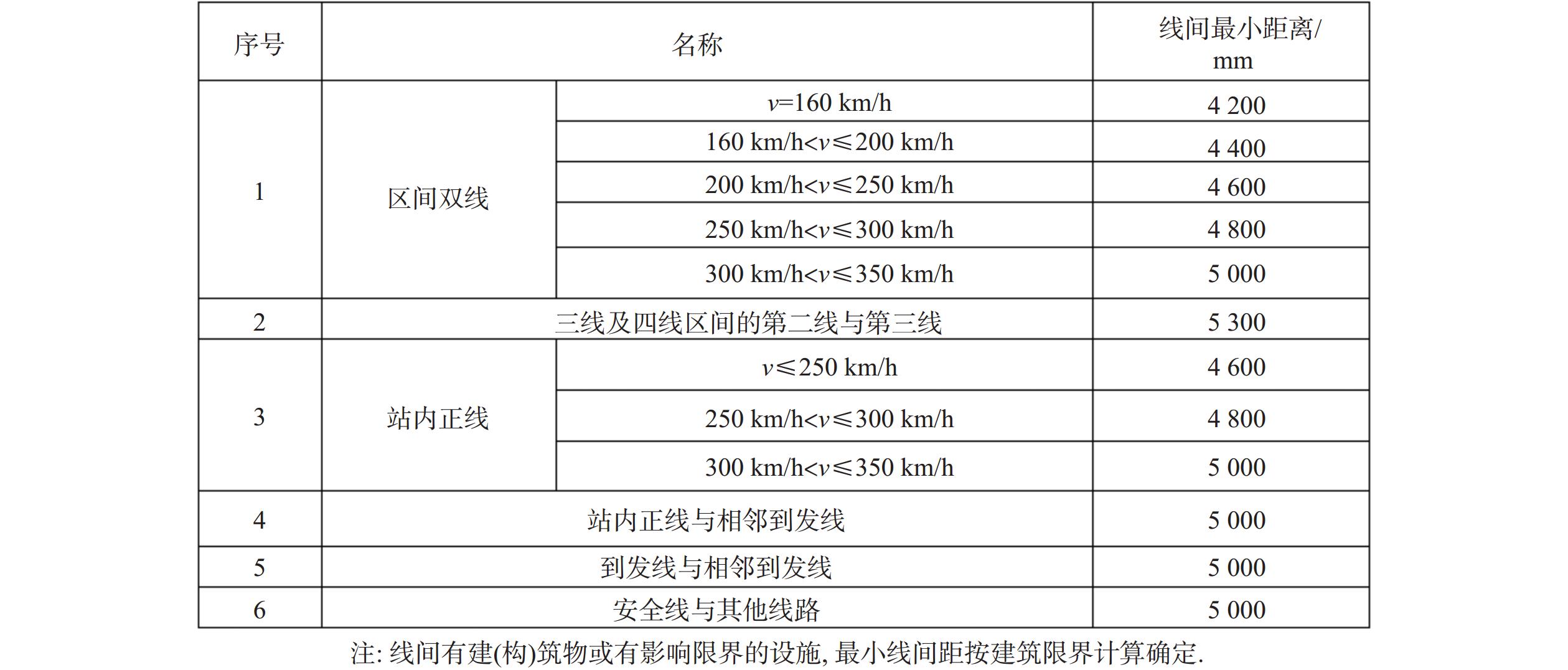
 下载:
下载:
